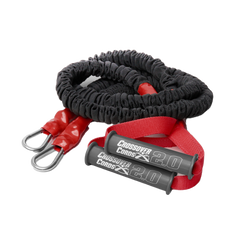A few years ago, US soccer implemented a new rule to reduce the risk of head injuries that made “heading” a penalty for players younger than 12.
It took some heat, but we can all agree that even if it alters the game a bit, protecting athletes from avoidable and potentially life-altering injuries is a good thing.
Soccer is not alone either. Baseball implements specific pitch count limits, football has strict rules regarding head contact and certain tackles, and numerous sports require headgear and other safety equipment.
But along the same lines, if there are proven preventative measures to reduce the risk of common soft tissue injuries, why not mandate these things as part of participation in sports?
I don’t suggest policing or fines for those who skip their ACL prevention program, but certification programs for coaches would be an excellent first start to better implement the strength and conditioning needed to reduce injuries.
Not only would this significantly reduce non-contact injuries, but it would help coaches design better programs and lead to the development of better athletes.
In short, if you’ve got a young athlete or you coach them, they need to be strength training.
Not to be a starter, get a scholarship, or they have to be good at what they do— their motivation should drive those desires.
But just as you promote healthy food choices and safe equipment options, a strength program is necessary for a youth athlete’s safety and longevity as an active person.
For the Multi-Directional Athlete
For multi-directional sports, the knee joint is most at risk. An estimated 350,000 ACL surgeries are occurring in the US each year that impact cutting sports like soccer and basketball the most. These are usually not caused by bone-crunching hits either. The majority of ACL tears (70-84%) are non-contact incidents and happen approximately 4x more often among girls (ref). At the age of 13, the risk of injury starts increasing.
A torn ACL means a season-ending surgery with at least a 6-month rehab. Also, roughly 8 out of 10 who sustain an ACL tear will develop knee arthritis later in life, and 20% will suffer reinjury within two years (ref).
There are suspected risk factors that cannot change. Things like hip angle, ligament thickness, and hormonal factors are suspected to increase the risk of ACL tears. The research also shows a prevention program can significantly reduce the risk of ACL tears. One study showed 52% and 82% in female and male athletes, respectively. It’s also the best way to reduce the chances of developing osteoarthritis (ref).
Building strength of the legs, glutes, and core to maintain athletic positions helps provide stability for the body. This is essential for performance and optimizes biomechanics to reduce the stress on connective tissues like the ACL.
For the Young Thrower
The young thrower is clearly at the greatest risk for shoulder and arm injuries. The best estimates show that 5% of youth pitchers will either need elbow or shoulder surgery or quit due to injury within 10 years of starting to play (ref).
This is not new news, especially if you are within the sport of baseball.
The issue of arm injuries is a growing hot topic, with many beliefs about what puts players at risk.
Overuse is the primary cause of these arm issues, but arm strength also holds significant weight (ref).
Studies show that rotator cuff weakness is an important indicator of the risk of injury. There are also considerations regarding biomechanics and fatigue that a strength program can help mitigate (ref).
Youth Strength Training
We’ve talked about this in previous articles: When Should Kids Lift Weights
It’s time to introduce strength training when your kids get the competitive drive. You’ll know this because they care whether they win or lose. This is usually around age 8 and is an important time for establishing movement patterns.
When starting out, make it fun by integrating different games into their training. Try things like throwing med balls, sled push races, or obstacle courses. This keeps it entertaining and creates some motivation without being too overbearing.
The goal is to build overall athleticism and teach them to exert force in different planes of motion. As a young athlete gets more sport specific, introduce preventative measures for those specific activities.
For example, the multi-directional athlete would benefit most from strengthening the hips and posterior chain, and throwers should focus on the strength of their rotator cuff.
In conclusion, strength training isn’t bad for kids and it’s not just for pushing kids to make varsity. A proper youth strength training program will prepare youth athletes for the demands of competition while preventing sports-related injuries that could detour their lives in significant ways.
 Shoulder Packages
Shoulder Packages
 Hip & Core Package
Hip & Core Package
 Bundles
Bundles
 Accessories
Accessories





















